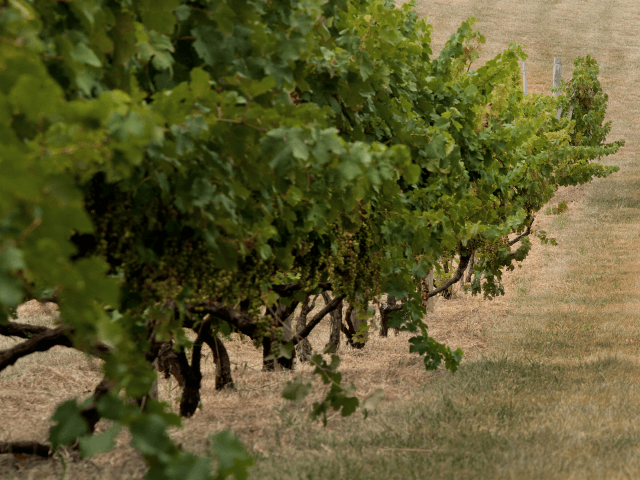Although it may seem paradoxical, a series of harsh winters that “killed” vineyards in western New York are being blamed on global warming.
Writing for WOSU, Angelica Morrison claims that grape growers in western New York state are “seeing the effects” of climate change as extreme temperatures are becoming “the new way of life.”
Although recent winters in the northeast have been quite warm, not long ago there were several bitterly cold seasons—all of which are supposedly the product of global warming.
“We’ve had a very mild winter [in 2016] so almost everything survived,” farmer Mike Jordan is quoted as saying. “But prior to that, the winter of 2014 to 2015, were extremely cold temperatures that I’ve never seen before.”
“And it killed a lot of vineyards that in the past we’ve had success with. We’ve done a lot of replanting and we try to choose varieties that can survive the winter,” he said.
Problems arising from fungal diseases such as powdery mildew as well as plant-attacking pests are generated when temperatures become more extreme, Morrison contends. “And Jordan is seeing the effects of that climate change in western New York.”
In point of fact, however, powdery mildew—as well as downy mildew and black rot—were the bane of American grape-growers throughout the 20th century, which clearly had nothing to do with anthropogenic climate change, and there is no evidence that instances of these viticultural menaces have increased in recent decades.
While downy mildew (plasmopara viticola) flourishes in humid weather, powdery mildew (uncinula necator) thrives in hot, dry conditions. Together with the vine-attacking pathogen of black rot (Guignardia bidwellii), which also prefers humid conditions, these diseases held back U.S. wine production for many decades until growers eventually developed methods to control them through the use of sulfur and a fungicide that came to be known as Bordeaux mixture.
According to Morrison, farmers have been obliged to change the types of grapes they grow, also because of climate change.
“What appeared attractive to grow years ago, now with more severe winters and more extremes, we’ve had to rethink what we’re planting,” Jordan said.
Local farmers have even brought in climate consultants, Morrison writes, to help them “cope with climate change.”
“Nationally on average, a majority of farmers believe the climate is changing,” said Allison Chatrchyan of Cornell’s Climate Smart division. “The things that we are seeing in the Northeast are definitely more intense rainfall events and that leads to runoff and flooding.”
Historically, this may not be completely true.
The greatest yearly rainfall recorded in the United States happened in 1981, while the most intense one-minute downpour occurred back in 1956, according to the National Oceanic and Atmospheric Administration (NOAA).
To witness the rainiest 15 minutes in U.S. history, one would need to go all the way back to 1871 in Galveston, Texas—long before climate change had gotten anybody’s knickers in a knot. And the rainiest 8 days in America occurred in 1902.
As for the worst cold spells in U.S. history, 1936 holds the record for the coldest month on record, with a cold wave that was so nasty it merits its own Wikipedia entry.
Of the seven worst winters in American history, only one happened after World War II, and that was in 1978. The others were in 1816, 1857, 1886, 1888, 1922, and 1940.
A look at climate history, even relatively recent history, tends to confirm what most rational people already suspected: climate changes. It changes every hour, every week, every month and every year.
Back in the day, this is what farmers referred to as weather.
Follow Thomas D. Williams on Twitter Follow @tdwilliamsrome

COMMENTS
Please let us know if you're having issues with commenting.